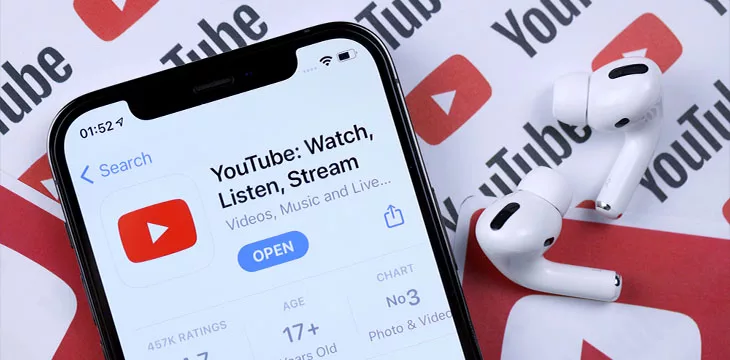YouTube has announced new rules requiring creators to label content created using artificial intelligence (AI) on the video streaming platform, as part of measures to protect users.
YouTube announced in a company blog post that once creators create realistic content with AI, they are expected to disclose it to viewers. YouTube’s new disclosure policy is required if AI is used to alter a person’s appearance or footage of realistic events or locations, according to the statement.
Creators who leverage AI to create life-like scenes from scratch will be required to label their videos, but the new rules provide certain exceptions. If AI tools are used in animation or other “fantasy” content, creators are exempt from labeling requirements. Additionally, using AI for simple edits like color adjustments, beauty filters, or other special effects eliminates the need for public tags.
“We do not require creators to disclose whether generative AI was used for productivity purposes, such as script generation, content ideation, or automatic caption generation,” the blog post reads. “We also will not require creators to disclose synthetic media if it is impractical or if the changes are insignificant.”
It’s still in beta, so expect the new AI labels to be included in video description boxes, but the company says videos about sensitive topics will see prominent labels. If creators do not include labels, YouTube has confirmed that it will take the initiative to label AI-generated content to avoid user misunderstanding.
YouTube plans to introduce penalties for creators who consistently fail to comply with its new labeling policy. Punishments could include video takedowns and account demonetization, but the company said it would give the community time to “adapt to new processes and features.”
The labeling feature will debut in mobile applications in the coming weeks and then expand to desktops and TVs. Taking a closer look at the labeling process, creators simply need to select ‘Yes’ to Changed Content in the Details section before uploading the video.
“This will be a constantly evolving process, and YouTube will continue to evolve as we learn,” YouTube said. “We hope this increased transparency will help us all better understand how AI continues to power human creativity.”
Putting a Label or a Face on Regulatory Anger
As regulators struggle to rein in AI innovation, a key part of their strategy is to require developers to label all synthetic content. Several AI companies, including Google (NASDAQ: GOOGL) and Meta (NASDAQ: META), have tested the viability of invisible watermarking capabilities in compliance with labeling requirements.
Other companies are testing the waters by integrating blockchain technology with AI as a way to clearly label synthetic content.
In June 2023, U.S. Senator Michael Bennet said, “Developers should strive to watermark videos and images when created, and platforms should attach labels and disclosures when distributed.” “Dealing with this requires a combined approach. “Unusual threat.”
For artificial intelligence (AI) to function properly within the law and succeed in the face of growing challenges, it must integrate enterprise blockchain systems that ensure data input quality and ownership. This helps keep your data safe while ensuring immutability. data. Check out CoinGeek’s coverage To learn more about this new technology Why enterprise blockchain will become the backbone of AI.
WATCH: Does AI know what it’s doing?
width=”562″ height=”315″frameborder=”0″allowfullscreen=”allowfullscreen”>
Are you new to blockchain? To learn more about blockchain technology, check out CoinGeek’s Blockchain for Beginners section, our ultimate resource guide.

